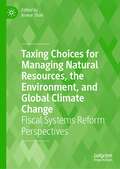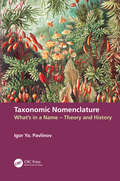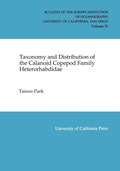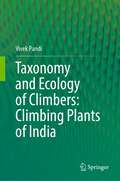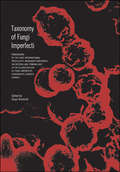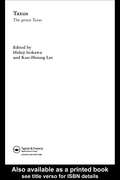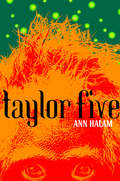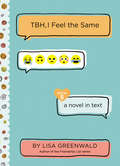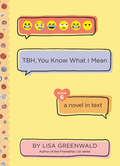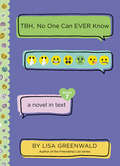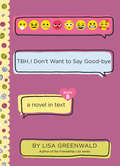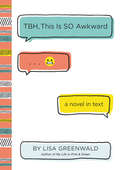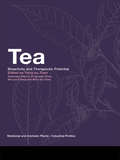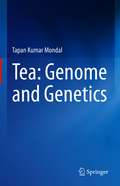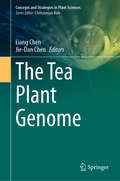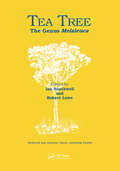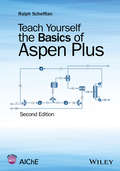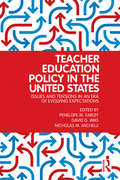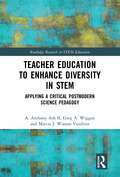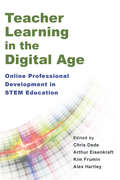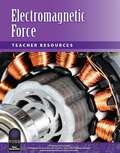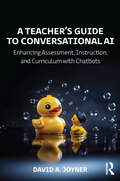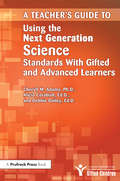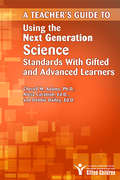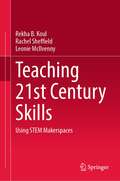- Table View
- List View
Taxing Choices for Managing Natural Resources, the Environment, and Global Climate Change: Fiscal Systems Reform Perspectives
by Anwar ShahThis book reviews taxing choices to protect the local and global environment and preserve and sustain natural resources. Alternative economic instruments such as carbon taxes and tradable permits to combat global climate change are also examined. Strategies and practices for the managing and sharing of revenues from natural resources are highlighted. Also, roles of various orders of government in managing, taxing, and sharing natural resources in selected countries are documented to highlight the impact of such division of responsibilities in preserving natural resources and the environment. The susceptibility of resource revenue dependent economies to corruption and malfeasance, and the Dutch disease, is also highlighted. This book could serve as a supplementary reference book for graduate and undergraduate courses and as a sourcebook for journalists, researchers, policymakers, and government practitioners.
Taxonomic Nomenclature: What’s in a Name – Theory and History
by Igor Ya. PavlinovThis book suggests an in-depth look at nomenclature in systematics instead of providing another "instruction for use" of various Codes of nomenclature. The focus is on ideas of what taxonomic nomenclature is as a part of the professional language of systematics considered in its full historical and conceptual scope. Basic concepts of nomenclature are outlined, and their development characterized; a hierarchy of fundamental principles of nomenclature are summarized; and the relationship between taxonomic nomenclature and taxonomic theory discussed. This book is addressed to those who would like to go beyond the boundaries of existing Codes to look at the subject from a more general, mostly theoretical standpoint. Key Features • Provides a review of the role of nomenclature in systematics • Reviews the conceptual scope and historical contexts of nomenclature • Analyzes fundamental principles of nomenclature • Outlines the historical development of nomenclature • Reviews the rules of nomenclature in botany, zoology, microbiology, and horticulture Related Titles Mishler, B. D. What, If Anything, Are Species? (ISBN 978-1-4987-1454-9) Pavlinov. I. Ya. Biological Systematics: History and Theory (ISBN 978-0-367-65445-0) Rieppel, O. Phylogenetic Systematics: Haeckel to Hennig (ISBN 978-0-367-87645-6) Wilkins, J. S. Species: The Evolution of an Idea, 2nd ed. (ISBN 978-0-367-65736-9)
Taxonomy and Distribution of the Calanoid Copepod Family Heterorhabdidae
by Taisoo ParkIn this revision of the calanoid copepod family Heterorhabdidae, 7 genera and 59 species are recognized and 25 species are described as new. A hypothesis of phylogenetic relationships is presented, and the geographic distribution of the species is discussed.
Taxonomy and Ecology of Climbers: Climbing Plants of India
by Vivek PandiThis book brings out the most comprehensive and up-to-date information on the taxonomy, biodiversity, and ecology of climbers in India. Climbing is one of the principal plant growth habits that have long attracted the interests of ecologists and evolutionary biologists. Climbing plants can add significantly to the species richness of many tropical forests ecosystems, yet they receive relatively lesser attention than trees in ecological studies. The difficulties in taxonomic assertions and lack of standard methodologies overlook climbers in plant inventories, resulting in the underrepresentation of climbers in regional floras. There is a growing consensus about the increasing abundance of climbers and their multifaceted role in tropical forests worldwide. Therefore, it is essential to understand the taxonomic diversity and ecology of climbers at the regional scale to substantiate our efforts towards constructing a global climber database, which serves as a reference for fundamental research in climber ecology and evolution. This book is of interest to biodiversity researchers, taxonomists, ecologists, and evolutionary biologists. Field biologists, forest managers, and naturalists will also find this a useful read.
Taxonomy of Fungi Imperfecti: Proceedings of the First International Specialists' Workshop Conference on Criteria and Terminology in the Classification of Fungi Imperfecti, Kananaskis, Alberta, Canada
by Bryce KendrickMycologists have been searching for a better system of classification of Fungi Imperfecti than that based on mature morphology. This volume documents an intensive phase of that search. It is largely an account of the proceedings of the First International Specialists' Workshop Conference on Criteria and Terminology in the Classification of Fungi Imperfecti held at the Environmental Sciences Centre of the University of Calgary, Kananaskis, Alberta. The invited contributors, all mycologists of international reputation, have had long experience with Fungi Imperfecti. The first fifteen chapters follow the course of the conference: they reproduce the formal papers and the lively discussion which followed. Chapter 16 describes a new, experimental scheme of classification distilled from the conclusions reached at Kananaskis. Four chapters concerned with the application of this scheme and with a variety of techniques now being used to extend knowledge of the Fungi Imperfecti round out the volume. The text is illustrated throughout with numerous photographs and drawings. In editing the volume, Professor Kendrick has given the text continuity by inserting short linking passages. The result is a readable and very informative account which conveys the unique atmosphere of this important conference.
Taxus: The Genus Taxus (Medicinal And Aromatic Plants - Industrial Profiles Ser. #Vol. 32)
by Hideji Itokawa; Kuo-Hsiung LeeTaxol, originally derived from the North American Yew tree in 1971, is well-known worldwide as a powerful anticancer agent. Mechanistically, it has a unique microtubule stabilizing activity, and was clinically developed as a therapeutic agent in the treatment of breast and ovarian cancers at the National Cancer Institute, Washington D.C., USA.I
Taylor Five
by Ann HalamA gripping, deeply moving adventure raises startling questions about what it means to be human. Taylor Walker seems like any ordinary 14-year-old. Ordinary—if you overlook the fact that she lives on the island of Borneo, on a primate reserve run by her parents, and knows how to survive in the jungle. Obviously, Tay isn’t just like everyone else. But she is like one other person. She’s exactly like one other person. Tay is a clone, one of only five in the world, and her clone mother is Pam Taylor, a brilliant scientist.When rebels attack the reserve, Tay escapes with her younger brother and Uncle, an exceptionally intelligent orangutan. As they flee through the jungle, Tay must look within to find her strength: Pam’s DNA, tempered by Taylor’s extraordinary life. And she looks to Uncle for guidance—for Tay knows that the uncanny bond between Uncle and herself is the key to their survival.
TBH #5: TBH, I Feel the Same (TBH #5)
by Lisa GreenwaldThree BFFs try to make new friends but keep the old in the fifth book in Lisa Greenwald’s hilarious series told entirely in text messages, emojis, and notes. Perfect for fans of Invisible Emmie and the Dork Diaries books.Making new friends is a good thing, right? Not when you barely see your besties! Between swim team, the school play, and poetry club, BFFs Cece, Gabby, and Prianka are meeting different people and trying different things. But besties clash when Gabby’s new friends rank the other girls in their grade in categories like looks, smarts, and popularity.The question is: How can you be your best self if your BFFs don’t have your back?
TBH #6: TBH, You Know What I Mean (TBH #6)
by Lisa GreenwaldThree BFFs prove that girls can do anything they set their minds to in the sixth book in this hilarious series told entirely in text messages, emojis, and passed notes. Perfect for fans of Invisible Emmie and the Dork Diaries. TBH, sometimes boys say dumb things about girls. And Cece is sick of it!When she leads a super-successful event at school to raise awareness, everyone starts looking to her to take charge—of everything. Prianka needs ideas for National Poetry Month, Victoria wants advice on volunteer projects, and Gabby needs homework help. To be honest, being a leader is fun but the pressure is OOC (out of control)! Can Cece help her friends without totally losing it herself?
TBH #7: TBH, No One Can EVER Know (TBH #7)
by Lisa GreenwaldWith a Valentine’s Day dance, snooping parents, and way too many secrets, these four BFFs have a lot to deal with in the seventh book in this hilarious series told entirely in text messages, emojis, and passed notes, perfect for fans of Invisible Emmie and the Dork Diaries series. It’s no secret that Victoria’s mom can be OTT overprotective! But lately her anxiety has been too much to handle. So even though Victoria is helping plan the school’s Valentine’s Day dance, she might not be allowed to go!To be honest, she’s going to need lots of help from her BFFs to mend this mother-daughter relationship—and it may mean sharing her most embarrassing secret ever! The question is: Can you take back a secret once you’ve shared it?
TBH #8: TBH, I Don't Want to Say Good-bye (TBH #8)
by Lisa GreenwaldWhen summer break brings BIG changes, these BFFs 4EVA may end up saying good-bye 4EVA in the eighth and final book in this popular middle-grade series told entirely in text messages, emojis, and passed notes. Perfect for fans of Invisible Emmie and the Dork Diaries. TBH, Cece, Prianka, and Gabby thought they’d be together forever. But when Gabby’s mom announces she’s moving to Texas and a backyard BBQ party gets the friends’ blow-out summer off to a rocky start, they end up spending more time apart than together! To be honest, Gabby just wants to get the good-byes over with already. The question is: How can they be BFF 4EVA if everyone goes their separate ways?
TBH, This Is So Awkward (TBH #1)
by Lisa GreenwaldTold entirely in text messages, this addictive new series from the acclaimed author of My Life in Pink & Green is perfect for fans of Lauren Myracle and Wendy Mass. To be honest, middle school is rough! Cecily, Gabby, and Prianka have been BFFAE since pre-K, so it’s totally natural when they don’t include the new girl, Victoria, in their plans and group texts.Between organizing the school Valentine’s Day dance, prepping for their first boy-girl party, and trying to keep their texts so boring their moms won’t use spy apps to read them, the friends only have time for each other.But when Victoria is accidentally sent a hurtful text message, the entire sixth grade gets called out for bullying, cell phones are confiscated, and the trio known as CPG4Eva is forced to figure out just how strong their friendships are IRL.
Tea: Bioactivity and Therapeutic Potential
by Yong-Su Zhen Zong-Mao Chen Shu-Jun Cheng Miao-Lan ChenThe tea plant, Camellia sinensis, is of particular importance to humans, and the consumption of tea has a long history of over 2000 years. Currently, tea is one of the most popular beverages worldwide. In recent years the subject of tea has attracted a great deal of attention. As well as the use of tea in traditional medicine, modern biochemical re
Tea: Genome and Genetics
by Tapan Kumar MondalTea is an important non-alcoholic beverage plant of the world. Cultivation of tea is also commercially very important as it earns huge revenue for the tea growing nations especially the developing countries such as India. Although conventional breeding is well-established and contributes significantly for varietal improvement of this plant and other Camellia species with ornamental value, yet, applications of biotechnology vis a vis genomics are essential to improve the productivity and quality of the tea. This book brings out various aspects of breeding, biotechnology and genomics of tea plants. It covers i) Origin and descriptions of health benefits as well as morphological classification as first chapter, ii) Breeding and cytogenetics that comprise with various conventional approaches of varietal improvement of tea along with their genetic resources, iii) Micro-propagation which deals with in-depth study of clonal propagation, iv) Somatic embryogenesis along with alternative techniques such as suspension culture, cry-preservation etc, v) Molecular breeding that deals with application of various DNA based markers such as discovery of QTL, linkage map etc, vi) Genetic transformation and associated factors, vii) Stress physiology complied various works done in tea along with its wild relatives on abiotic as well as biotic stress and viii) Functional genomics that describes the various works of molecular cloning and characterizations, differential gene expression, high-throughput sequencing, bioinformatics transcriptomics study that described the application of next generation sequencing to discover various genes that are related to various trait of tea, Non-coding RNA which describes the discovery of various non-coding RNA in tea and related genera. The book also discusses recent developments in biotechnology such as metabolomics, proteomics, genome sequence and popular clone varieties of tea crops that are developed across the world.In conclusion, the book collates the work on tea plantations so far, identified the problems, analyzes the gaps on breeding and biotechnological works of tea as well as its wild species and discusses the future scopes as conclusion. The book aims to cover all latest information till june, 2020 . It will be useful resource for post-graduate, doctoral as well post-doctoral students working on tea as well as other woody plants. This will also be useful for the scientists working in the areas of life sciences, genomics, biotechnology and molecular biology.
The Tea Plant Genome (Concepts and Strategies in Plant Sciences)
by Liang Chen Jie-Dan ChenThis edited volume is focused on genomic study of tea crop. This book includes 20 chapters that cover the most relevant and hot topics in tea plant genetics and genomics. A first set of chapters includes its global economic and healthy importance, the botany and taxonomy, main quality and functional components. A second group of chapters deals with genetics, breeding and includes genetic resources, commercial breeding, genetic transformation techniques, as well as the use of marker assisted selection (QTL, GWAS). This will be followed by a set of chapters on omics, including the genomics, transcriptomics, metabolomics, proteomics, organelle genome, small RNA and DNA methylation. Two chapters are devoted to biotic and abiotic stresses, continued by two others more chapters focused on the SNP array, and databases for molecular design breeding. Finally, a chapter deals with future perspectives in the omics era for tea breeding. The tea plant is a cross-pollinated, self-incompatible, high heterozygosity, very large genome (~3.2 Gb) which have greatly hindered research and breeding in this crop. In the recent years, modern genetic and genomic tools have contributed to the development of significant valuable resources for the tea genetic improvement. This book is of interest to teachers, tea researchers, tea breeders and tea lovers. Also, the book serves as additional reading material for undergraduate and graduate students of agriculture, forestry, horticulture, beverage plant sciences.
Tea Tree: The Genus Melaleuca (Medicinal and Aromatic Plants - Industrial Profiles)
by Ian Southwell Robert LoweAn up-to-date review of this popular medicinal plant genus, this book will be of interest to all those concerned with the study and use of medicinal plants and provides a comprehensive and contemporary overview of the status of tea tree.
Teach Yourself the Basics of Aspen Plus (Second Edition)
by Ralph SchefflanUsed for a wide variety of important scientific tasks, Aspen Plus software is a modeling tool used for conceptual design, optimization, and performance monitoring of chemical processes. After more than twenty years, it remains one of the most popular and powerful chemical engineering programs used both industrially and academically. <p><p> Teach Yourself the Basics of Aspen Plus, Second Edition continues to deliver important fundamentals on using Aspen Plus software. The new edition focuses on the newest version of Aspen Plus and covers the newest functionalities. Lecture-style chapters set the tone for maximizing the learning experience by presenting material in a manner that emulates an actual workshop classroom environment. Important points are emphasized through encouragement of hands-on learning techniques that direct learners toward achievement in creating effective designs fluidly and with confidence. <p> Designed with both students and professionals in mind, Teach Yourself the Basics of Aspen Plus, Second Edition is like having a personal professor 24/7. Its revolutionary format is an exciting way to learn how to operate this highly sophisticated software--and a surefire way for readers to get the results they expect.
Teacher Education Policy in the United States: Issues and Tensions in an Era of Evolving Expectations
by Penelope M. Earley David G. Imig Nicholas M. MichelliWhat constitutes a high quality teacher education program and what standards teacher candidates should meet before receiving their teaching credential? This volume advances deep understanding of the nature and sources of policy affecting the preparation of teachers in the U.S. and the conflicts or interconnections of these policies with the broader field of education policy. Contributions from actors in the policy world and experts representing the stakeholders are balanced and based on issues currently facing the field. Policy is viewed as evolving and political. The connection or lack thereof between policy and research is examined. Policy case studies ground the principles developed within specific chapters in practice and illustrate that policy questions and solutions are continually evolving and unsettled. Chapter-end commentaries by the editors relate the focus of each chapter to the overarching themes of the book: policy formation, policy influences, policy paradoxes, and connections to research. This volume is an essential resource for understanding and resolving today’s uncertainty and confusion over teacher education policy.
Teacher Education to Enhance Diversity in STEM: Applying a Critical Postmodern Science Pedagogy (Routledge Research in STEM Education)
by A. Anthony Ash II Greg A. Wiggan Marcia J. Watson-VandiverAddressing underlying issues in science education and teacher training, which contribute to continued underrepresentation of racial and ethnic minority students in STEM and STEAM subjects and careers, this timely volume illustrates how a critical postmodern science pedagogy (CPSP) can be used effectively to raise awareness of diversity issues amongst preservice teachers. Using a case study design consisting of class observations, interviews, content analysis, questionnaires, and instructional interventions in preservice teacher training, the volume bridges science and multicultural education and investigates how curricular development and teacher preparation can be used to ensure that science education itself promotes diversity within STEM, and throughout education. Chapters also examine the intersections of science education and science literacy for both students and teachers and, in doing so, promote the importance of positive and accurate representation of diversity within science and research discourse. The book attempts to raise awareness regarding the need for meaningful curricular reform that creates real opportunities to address historical and scientific misinformation, while increasing diversity and inclusion in schools and society. This important text will be of interest to postgraduate students, researchers, scholars, and preservice teachers in the fields of science and mathematics education, STEM, multicultural education, teacher education, urban education, and the sociology of education.
Teacher Learning in the Digital Age: Online Professional Development in STEM Education
by Chris Dede Kim Frumin Arthur Eisenkraft Alex HartleyWith an emphasis on science, technology, engineering, and mathematics (STEM) training, Teacher Learning in the Digital Age examines exemplary models of online and blended teacher professional development, including information on the structure and design of each model, intended audience, and existing research and evaluation data. From video-based courses to just-in-time curriculum support platforms and MOOCs for educators, the cutting-edge initiatives described in these chapters illustrate the broad range of innovative programs that have emerged to support preservice and in-service teachers in formal and informal settings. "As teacher development moves online," the editors argue, "it's important to ask what works and what doesn't and for whom," They address these questions by gathering the feedback of many of the top researchers, developers, and providers working in the field today. Filled with abundant resources, Teacher Learning in the Digital Age reveals critical lessons and insights for designers, researchers, and educators in search of the most efficient and effective ways to leverage technology to support formal, as well as informal, teacher learning. "Teacher Learning in the Digital Age is a superb compilation of exemplary instructional practices utilizing digital resources. This thoughtful and practical body of work can be leveraged to propel teacher and student success in the evolution of the digital classroom and school." --Mark Edwards, superintendent, Mooresville Graded School District, North Carolina
Teacher Resources: Electromagnetic Force
by Lawrence Hall of Science University of California at BerkeleyNIMAC-sourced textbook
A Teacher’s Guide to Conversational AI: Enhancing Assessment, Instruction, and Curriculum with Chatbots
by David A. JoynerA Teacher’s Guide to Conversational AI explores the practical role that language-based artificial intelligence tools play in classroom teaching, learning experiences, and student assessment. Today’s educators are well aware that conversational and generative AI—chatbots, intelligent tutoring systems, large language models, and more—represent a complex new factor in teaching and learning. This introductory primer offers comprehensive, novice-friendly guidance into the challenges and opportunities of incorporating AI into K-12 schools and college classes in ways that are appropriate, nourishing to students, and outcomes-driven.Opening with an informative overview of the foundational properties, key terminology, and ethical considerations of these tools, the book offers a coherent and realistic vision of classrooms that are enhanced, rather than stymied, by AI systems. This includes strategies for:· designing assessments that are conducive to students’ beneficial use of AI while mitigating overreliance or dishonesty;· using AI to generate lesson examples for student critique or custom content that reinforces course principles;· leveraging chatbots as a co-instructor or a tutor, a guide during student-driven learning, a virtual debate or brainstorming partner, and a design project; and· creating course content, lesson plans and activities, expanded language and accessibility options, and beyond. Through the depth of understanding and applied approach provided in these chapters, teachers and leaders in training and in service, alongside private tutors, college instructors, and other educators, will be better prepared to future-proof their efforts to serve new generations of learners.
Teacher's Guide to Using the Next Generation Science Standards With Gifted and Advanced Learners
by Cheryll M. Adams Alicia Cotabish Debbie DaileyA Teacher's Guide to Using the Next Generation Science Standards With Gifted and Advanced Learners provides teachers and administrators with practical examples of ways to build comprehensive, coherent, and rigorous science learning experiences for gifted and advanced students from kindergarten to high school. It provides an array of examples across the four domains of science: physical sciences; Earth and space sciences; life sciences; and engineering, technology, and applications of science. Each learning experience indicates the performance expectation addressed and includes a sequence of activities, implementation examples, connections to the CCSS-Math and CCSS-ELA, and formative assessments. Chapters on specific instructional and management strategies, assessment, and professional development suggestions for implementing the standards within the classroom will be helpful for both teachers and administrators.
A Teacher's Guide to Using the Next Generation Science Standards with Gifted and Advanced Learners
by Alicia Cotabish Debbie Dailey Cheryll AdamsA Teacher's Guide to Using the Next Generation Science Standards With Gifted and Advanced Learners provides teachers and administrators with practical examples of ways to build comprehensive, coherent, and rigorous science learning experiences for gifted and advanced students from kindergarten to high school. It provides an array of examples across the four domains of science: physical sciences; Earth and space sciences; life sciences; and engineering, technology, and applications of science. Each learning experience indicates the performance expectation addressed and includes a sequence of activities, implementation examples, connections to the CCSS-Math and CCSS-ELA, and formative assessments. Chapters on specific instructional and management strategies, assessment, and professional development suggestions for implementing the standards within the classroom will be helpful for both teachers and administrators.
Teaching 21st Century Skills: Using STEM Makerspaces
by Rekha B. Koul Rachel Sheffield Leonie McIlvennyThis book helps educators provide opportunities for their students to engage in creative and collaborative projects that blur the lines between subjects and promote problem-finding and problem-solving activities. It offers a global perspective on makerspaces through an Indian and Australian lens, illustrating the commonalities between the approach and the pedagogy in order to highlight the universal nature of these essential 21st-century skills. The book is particularly useful for science, technology and mathematics teachers, highlighting the potential of engaging in a more integrated curriculum approach to their specific discipline. It is of great interest to scholars whose research focuses on understanding 21st-century skills and how they can be taught and assessed in a school setting. It is an indispensable resource for teacher educators, school administrators, curriculum designers, policymakers and researchers in the field of science education.
